Why Does Italy Have So Many Luxury Brands? 13 Historic Reasons
Italy’s luxury market is renowned for its opulent heritage fashion houses, designer Italian sunglasses brands, and world-class craftsmanship. But why does Italy have so many luxury brands? The answer lies in a deep-rooted mix of historical forces. From the Roman Empire’s early textile dominance to the rise of Renaissance artistry, regional craft specialisations to production hubs, and post-war industrial innovation, we can address ‘why did Milan become a fashion capital?’ Additionally, equally important is the question: why is Italian craftsmanship so good? The answer lies in Italy’s continued emphasis on family-owned manufacturing, regional pride in skill-based trades, and a tradition of hand-finishing that dates back centuries. These values are still alive today, as reflected in the country’s excellent Made in Italy reputation.
According to Deloitte’s 2023 Global Powers of Luxury Goods report, Italy is home to 23 of the Top 100 luxury goods companies, including renowned top luxury fashion houses like Prada, Moncler, and Giorgio Armani. While Italy accounts for only 7.8% of global luxury sales, many of its brands remain majority family-owned. This means they maintain control over quality and brand identity.
In this guide, we’ll explore the 13 historical and cultural reasons why so many luxury brands are Italian—from imperial trade routes to modern Milanese catwalks. Whether you’re interested in the history of Italian fashion, the rise of Gucci in Florence, or what makes Tuscan leather so prized, this article uncovers what truly sets Italian craftsmanship apart.

Section I: The Roman Empire and Its Legacy: Foundations of Italian Luxury Craftsmanship
When answering the question ‘why does Italy have so many luxury brands?’ it is crucial to recognise the link between how the advancements in ancient Roman Empire’s textile industry set a high standard for craftsmanship in Italy’s current luxury market.
Explore Roman textiles and how they were brought to what is now known as Italy.
Heritage of Roman Craftsmanship on Italian Luxury Trade
ROMAN TEXTILES AND THE BIRTH OF ITALIAN LUXURY GOODS
One of the foundational reasons why Italy has so many luxury brands today lies in its centuries-old legacy of textile excellence, rooted in the Roman Empire’s vast trade network. During the Middle Ages and the Renaissance (approximately 5th to 17th centuries), Italy became a melting pot of artisans, merchants, and master weavers from former Roman provinces. These skilled craftsmen brought with them advanced techniques in weaving, dyeing, and embroidery.
These traditions would later evolve into the hallmarks of Italian luxury craftsmanship. From silk and linen, to wool and gold thread, Italy’s reputation for fine textiles began with this rich convergence of knowledge. This set the groundwork for the luxury fashion industry that Italy leads today.
Eastern Mediterranean (Byzantium/Constantinople) Textile Influence
This area was rich in trade and craft knowledge, especially in textiles and dyeing.
The Byzantine Empire, centred in Constantinople, was one of the most influential forces in shaping early Italian textile culture. Specifically, it was renowned for its opulent silk production and intricate brocade weaving. Byzantium passed on these luxury techniques to Italian city-states through trade and migration. As a result, cities like Venice and Lucca became epicentres for silk weaving in the medieval period. This infusion of refined methods helped establish Italy’s luxury textile industry, which still thrives today in high-end silk production for luxury fashion houses like Gucci and Etro.
North Africa (Egypt and Carthage) Linen
North Africa, particularly Egypt and the city of Carthage, was central to the Roman Empire’s linen supply. Egypt’s fertile Nile Delta produced some of the world’s finest flax. These textiles were traded into the Italian peninsula via Roman maritime routes and helped elevate Italy’s early association with elite materials. The heritage of fine linen continues in modern Italian luxury homeware and fashion staples. For example, crisp handmade shirts from brands like Brioni and Canali likely trace their roots to these ancient textile traditions.
Levant (Syria and Phoenicia) Dyeing and Weaving Techniques
Renowned for their dyeing techniques, especially Tyrian purple, which became symbols of luxury and status. They derived Tyrian purple from the secretions of the murex sea snail, prized for its vibrant and lasting hue. The Phoenicians of Tyre originally created this dye. However, the Romans valued it so highly that they reserved it for the robes of emperors and high-ranking officials.
Western Mediterranean (Spain and Southern France) Trade Connections with Spain and Southern France
These regions had established trade networks and contributed to the spread of agricultural and craft practices.
Additionally, farmers across the Roman Empire widely produced wool due to the prevalence of sheep farming.
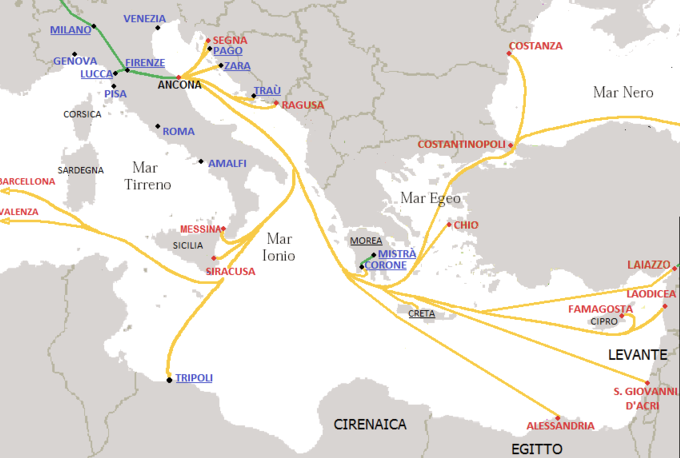
The merchants and artisans relocated to specific Italian regions known for their trade opportunities or craft specialisations. For example, they carried Byzantine- and Levantine-inspired techniques like intricate weaving and dyeing methods to centres like Florence, a burgeoning hub of luxury production. They also benefitted from Mediterranean trade routes to the Northern Trade Republics outlined below.

Section II: How the Rise of the Northern Italian Trading Republics Influenced Why Italy Has so Many Luxury Brands
The decline of the Roman Empire saw the rise of Northern Italian trading republics. These areas included Venice and Genoa, from the 11th century through the 15th century. Particularly, they flourished during the Middle Ages, with significant activity from around 1000 to 1500.
Their locations and thriving maritime trade networks enabled them to strategically facilitate the exchange of exotic materials and luxury goods. This significantly shaped and laid the groundwork for the development of Italy’s luxury market.
Venice as a Luxury Trading Power in the Mediterranean
With the fall of the Roman Empire and subsequent Barbarian invasions, many skilled artisans sought refuge in various regions. During the Middle Ages, Venice rose to prominence as a trading power. Situated at a key maritime crossroads, Venetian merchants and traders engaged in commerce with the Byzantine Empire, the Middle East, and North Africa.
Here, they encountered diverse artistic traditions, including glassmaking. Venetian artisans adapted new skills with their artistic sensibilities. This led to the 1291 relocation of glassmakers to Murano Island by the Venetian Republic, which regulated techniques to boost glass production. This established Venice as the centre for glassmaking and laid the foundation for Italy’s reputation for modern eyewear.
Venetian merchants played a pivotal role in importing exotic materials such as silks, spices, and dyes from the East. These luxury goods were highly sought after across Europe. Skilled Venetian artisans transformed imported silks into decorative textiles.
Moreover, perfumers in Venice used imported spices to create luxurious fragrances that became status symbols. Meanwhile, vibrant dyes like indigo and saffron, sourced primarily from India, were essential in producing richly coloured fabrics. These handcrafted materials elevated Venice’s reputation for quality and beauty, laying the foundation for Italy’s long-standing tradition of luxury craftsmanship.

Genoa’s Maritime Wealth and Its Impact on Italian Craftsmanship
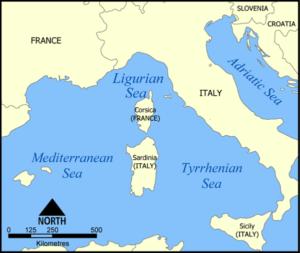
Genoa’s strategic location on the Ligurian coast made it an indispensable hub for maritime trade between the Mediterranean and Northern Europe. Genoese merchants engaged in extensive trade with the Byzantine Empire, Middle East, North Africa, and Western Europe. This helped establish Genoa as a key hub for luxury goods.
Specifically, Genoese merchants imported high-quality textiles, dyes, and precious stones. These included Byzantine gold-smithing, Middle Eastern textiles, and North African ivory. Genoean artisans incorporated these materials and techniques to produce highly sought-after jewelry.
Conversely, Byzantine jewelry was traditionally known for its intricate gold work and use of lavish materials like pearls and gemstones. Meanwhile, Genoese pieces often featured a blend of these luxurious materials with Western influences, such as elaborate filigree and the use of enamel. They also used North African ivory as decorative embellishments for their jewellery pieces.
Venice and Genoa’s influence on why Italy has so many luxury brands today
Today, this heritage continues. Italian luxury brands leverage centuries of expertise in design, materials, and innovation to maintain their global prominence. This makes it easy to answer the question, ‘why does Italy have so many luxury brands?’
The historical influx of diverse artistic traditions and exotic materials through Venice’s and Genoa’s maritime trade routes laid a foundation for Italy to excel in the luxury sector.
They introduced high-quality textiles, intricate glassware, and luxurious perfumes, shaping Italy’s modern luxury fashion, accessories, and fragrance industries. For instance, Dolce & Gabbana’s Fall/Winter 2013 Ready-to-Wear collection was notably inspired by Byzantine art and opulence. This collection, titled “Tailored Mosaic,” featured elaborate jewellery, religious figures and garments adorned with intricate mosaic patterns inspired by the Cathedral of Monreale in Sicily.
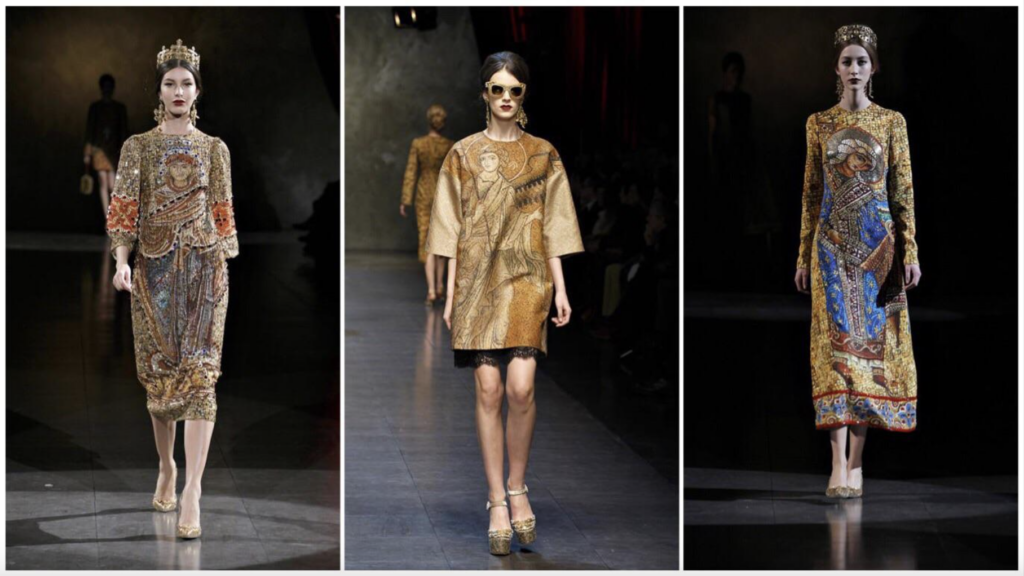
Florentine Renaissance Influence on Italian Luxury Brands
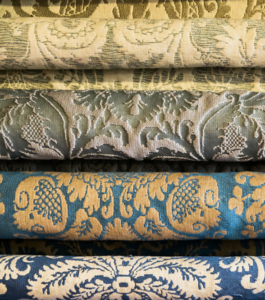
The Renaissance, spanning the 14th to 17th centuries, was a period of profound artistic and cultural achievement in Italy. It marked significant advancements in art, fashion, and product design, driven by the contributions of skilled artisans across Italy.
During this era, Florence, from the late 14th to the early 16th century, emerged as a crucial centre of textile innovation. Located in the fertile Arno River valley, Florence had ample water resources essential for textile dyeing and finishing processes. Its strategic position along key trade routes facilitated the import of raw materials and the export of finished goods. This promoted the exchange of ideas and techniques.
The wealth of the Florentine Republic and its patronage of the arts also catalysed the development of intricate weaving patterns and luxurious fabrics. This period saw the influence of Renaissance art and design permeate textile production. As a result, groundbreaking designs and exceptional fabric quality that would become foundational to Italy’s luxury market.

Section III: Regional Craftsmanship and the Birth of Italian Luxury Brands
By the Middle Ages, as the Roman Empire declined, skills were disseminated across what is now Italy. Regions had established distinct specialisations that contributed to Italy’s dominance in the luxury sector.
Building on the legacy of the Florentine Renaissance, the regions of Tuscany, Lombardy, and Veneto continued to refine and specialise their craftsmanship from the 16th century onwards. This regional expertise, honed over centuries, contributed to Italy’s emergence as a global leader in luxury craftsmanship and fashion.
Traditional Crafts in Italy by Region & Italian Luxury Brands
| Tuscany | Known for its leather-working, Tuscany, especially Florence, leveraged Roman tanning techniques and abundant natural resources to produce high-quality leather goods. Italian luxury brands like Gucci and Salvatore Ferragamo, both founded in Florence, owe their origins to Tuscany’s leather-working tradition. The region’s legacy continues with Florence hosting Pitti Uomo, a prestigious men’s fashion event. |
| Lombardy | Roman textile techniques and trade with the East influenced Lombardy, including Milan, to excel at silk weaving. This expertise set the region apart in the production of fine textiles, which helped evolve into its status as a fashion capital. Dolce & Gabbana’s local networking and collaborations with Lombardy’s textile suppliers and artisans helped integrate high-quality silk into their luxury fashion offerings. |
| Veneto | Veneto developed a reputation for excellence in footwear and eyewear, building on its history of craftsmanship in glassmaking and leather-working. Today, Veneto is home to global leaders like Luxottica, a dominant player in the eyewear market, and luxury footwear brands such as Bottega Veneta. |


Section IV: Italian Renaissance, Industrialisation, Post-War Era and Italy’s Luxury Evolution
Why does Italy have so many luxury brands? Italy’s dominance in luxury craftsmanship is rooted in its rich history of artistic innovation from the Renaissance to the Baroque period. The Industrial Revolution bolstered production efficiencies across regional specialisation, further cemented Italy’s reputation for its craft.
Read on to discover how this legacy, combined with regional diversity and artisanal traditions following the post-war economic boom, propelled Italy to establish a global presence in luxury fashion, jewelry, and design.
Renaissance to Baroque Transition (16th-18th Century)

The transition from the Renaissance to the Baroque period saw continued advancements in art, design, and luxury craftsmanship. The Baroque era (late 16th to early 18th century) in Italy was characterised by opulent designs and intricate craftsmanship that influenced Italian textiles, fashion, and luxury goods.
This period saw the proliferation of ornate textiles, elaborate jewelry, and sophisticated leather goods. The demand for such high-quality and lavish products reinforced Italy’s reputation as a leader in luxury craftsmanship.
For example, during the Baroque period, Venice saw a surge in intricate glassware and ornate textiles. Venetian glassmakers introduced new methods such as millefiori (thousand flowers) and the use of gold leaf. Rome produced even more lavish ecclesiastical garments and luxurious jewelry, especially following the Counter-Revolution, with the use of precious metals and stones, and intricate embroidery. Naples became known for its high-quality textiles and refined leather accessories. The influence of Baroque aesthetics extended beyond Italy, impacting European fashion and design and establishing Italian luxury as synonymous with grandeur and elegance.
Impact of 19th-Century Industrialisation on Italian Artisanship
The 19th century brought significant industrialisation to Italy, profoundly impacting its luxury market. While Italy remained a stronghold of traditional craftsmanship, the introduction of industrial processes facilitated greater efficiency and scale in local production.
Key innovations, such as mechanised looms for textiles and improved leather processing techniques, revolutionised manufacturing. For example, mechanised weaving allowed for the rapid production of intricate fabrics essential for luxury fashion. Advancements in leather processing enhanced the creation of premium leather goods. Additionally, Italy’s economic, cultural, and political context uniquely positioned it to capitalise on both industrial efficiency and artisanal heritage.
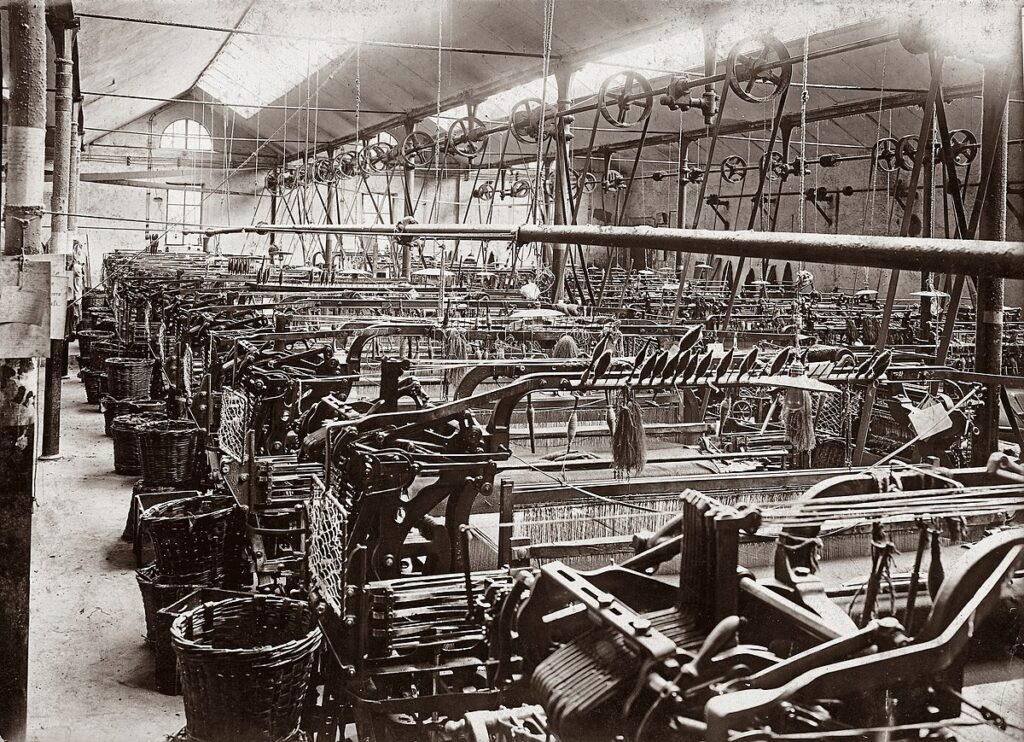
These developments enabled Italian manufacturers to expand their reach and production capabilities greatly. However, they could also simultaneously preserve the artisanal quality that defined Italian luxury. As a result, the blend of artisanal skill and industrial efficiency contributed to the rise of iconic Italian brands like Gucci and Prada in the 20th century. Therefore, this helped solidify Italy’s position as a dominant force in the global luxury market.
However, whilst Italy’s 19th-century industrialisation introduced efficiencies in production that allowed for greater scale, Italy’s fashion industry remained fragmented across various cities. Milan only emerged as a prominent fashion centre later with the establishment of Milan Fashion Week in 1958.
France vs. Italy: A Historical Rivalry in Luxury Fashion
Italy’s history of decentralisation, marked by numerous independent city-states and kingdoms, created a diverse array of regional cultures and artistic traditions. This fragmentation allowed for a variety of thoughts and fashion styles to flourish. Ultimately, this contributed to the distinct flair and creativity of Italian luxury brands like Salvatore Ferragamo, Valentino Garavani, and Prada.
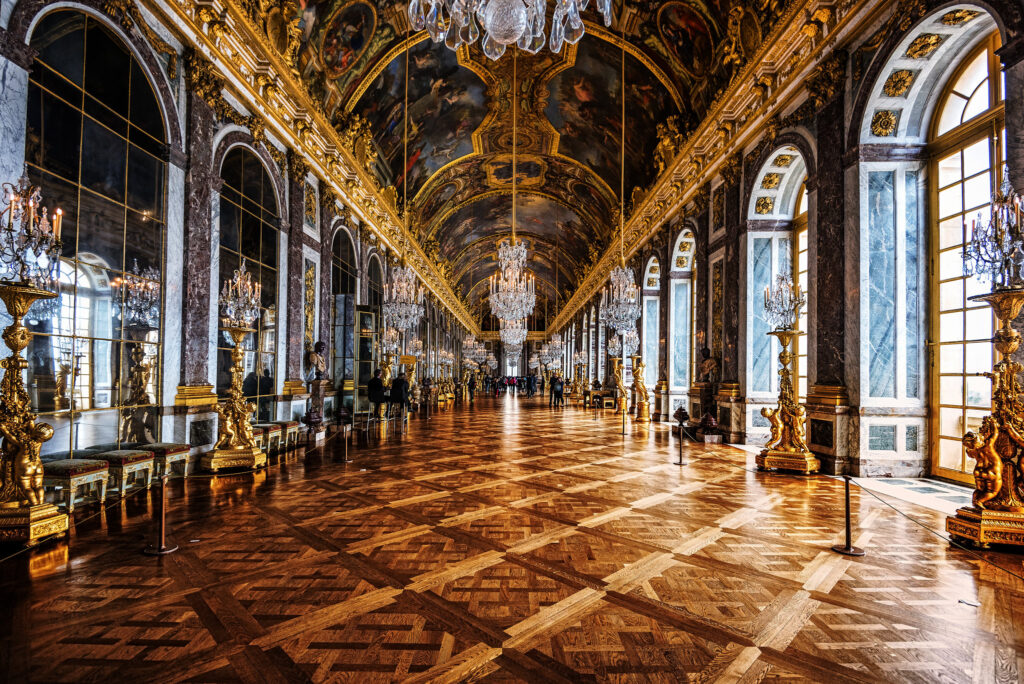
In contrast, France’s early centralised unification under powerful monarchs fostered a cohesive national identity. Examples include Louis XIV in the 17th century and Napoleon Bonaparte in the early 19th century. Louis XIV’s establishment of the royal court at Versailles (and the lavish fashion associated with it) set a precedent for France’s dominance in luxury and haute couture. The wealth of the French upper classes and the centralised support from these monarchs enabled substantial investment in fashion. Such influences positioned Paris as an epicentre of fashion on a global scale.
This centralisation helped Paris cultivate a cohesive and influential fashion industry. Whereas Italy’s regional diversity led to a rich array of luxury brands that each embody unique elements of Italian craftsmanship and design.
Italy’s Post-War Economic Boom and the Global Rise of Italian Luxury
Why are So Many Luxury Brands Italian – The Italian Economic Miracle
Italy experienced a post-war economic boom, known as the “Italian Economic Miracle,” which injected crucial funds into the country’s industrialisation and revitalisation. This period saw the rise of Italy’s middle class and a new affluent class with a strong interest in luxury goods. The economic boom, coupled with the reconstruction of infrastructure, helped Italy recover quickly from the devastation of World War I. It empowered Italian industries with modern machinery and technology, enhancing efficiency and productivity. These advancements allowed Italian artisanal communities to scale their production capabilities and reach a global audience without losing the essence of their work. Regional crafts scaled into thriving industries—leather workshops in Tuscany, textile hubs in Lombardy, and glassmakers in Veneto found global markets for their goods.
This synergy between innovation and tradition gave rise to many of today’s most iconic Italian luxury brands. Italian fashion houses such as Gucci (Florence), Prada (Milan), and Valentino (Rome) exemplified this synthesis. Backed by skilled regional labour and boosted by rising global demand, they evolved from local ateliers into internationally recognised symbols of elegance and Italy’s industrial rebirth.

Section V: Italian Fashion, Film, and the Rise of Milan as a Fashion Capital
Italy’s rise to prominence in the luxury fashion world is encapsulated in the vibrant story of Milan’s ascent as a global fashion capital. After World War II, Milan’s strategic location, robust textile industry, and creative talent solidified Italy’s position as a leading hub for luxury brands with the launch of Milan Fashion Week in 1958.
Answer the question ‘why does Italy have so many luxury brands?’ and understand how its unique blend of tradition and innovation continues to influence global fashion.
Why Did Milan Become a Fashion Capital?
As Italy’s economy recovered after World War II, Milan began emerging as a major fashion capital. The city’s status was solidified in 1958 with the establishment of Milan Fashion Week, a major global fashion event showcasing top designers and luxury brands. This event was driven by the burgeoning Italian fashion industry, which sought to distinguish itself from its French counterpart.
Milan, with its rich heritage in design and manufacturing, became the epicentre of this movement. The city’s strategic location, robust textile industry, and creative talent pool made it an ideal fashion hub. The inception of Milan Fashion Week provided a platform for Italian designers to showcase their innovative and high-quality creations to an international audience.
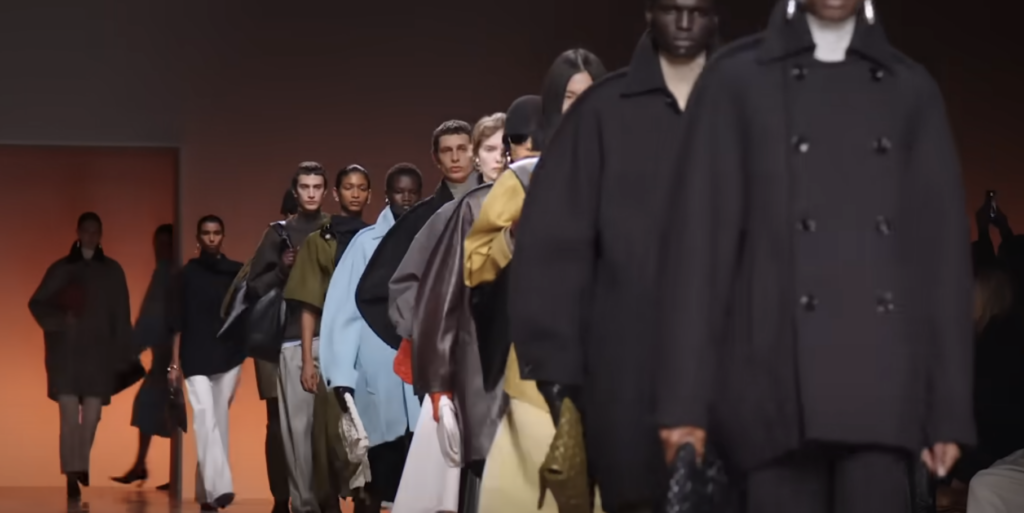
It amplified the reputation of Italian luxury brands such as Giorgio Armani, Dolce & Gabbana, and Miuccia Prada, cementing Italy’s status as a global leader in fashion.
This event not only bolstered Italy’s cultural influence but also significantly contributed to the economic value of its luxury sector, attracting global attention and investment. Consequently, Milan Fashion Week has played a crucial role in solidifying Italy’s dominance in the global luxury market and enhancing the prestige of its brands.
In recent years, Italian luxury brands have continued to evolve, embracing digital transformation while upholding their reputation for exceptional quality. Renowned designers such as Donatella Versace and Brunello Cucinelli remain at the forefront, with their creations gracing the red carpet and shaping trends worldwide.
Italian Fashion and Film
The symbiotic relationship between Italian fashion and the film industry has been a source of inspiration for eyewear design. The Neorealism movement during the 1940s showcased authentic stories of everyday life, featuring actors showcasing stylish sunglasses. These grew to transcend mere accessories and form iconic symbols.
The Dolce Vita Era: Cinema’s Influence on Italy’s Luxury Identity
The Dolce Vita era, spanning the late 1950s and early 1960s, marked a cultural renaissance characterised by economic prosperity, social change, and artistic innovation. This period emerged as Italy experienced a post-war economic boom and the rise of a glamorous lifestyle, epitomised by the film industry.
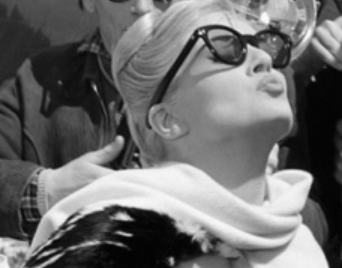
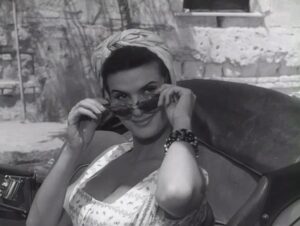
Italian films during the Dolce Vita era like Federico Fellini’s “La Dolce Vita” (1960) and Michelangelo Antonioni’s “L’Avventura” (1960 portrayed a mix of hedonism and social critique. Their iconic actors, Marcello Mastroianni and Anita Ekberg, showcased a blend of sophistication and rebellion with their on-screen personas.
The film industry’s influence on fashion and eyewear was profound. Mastroianni’s character in “La Dolce Vita” popularised the classic black Wayfarer sunglasses. Other films featured oversized frames and bold designs.
These cinematic influences propelled the popularity of Italian eyewear. Moreover, they also elevated global perception of Italian eyewear. People associated Italian sunglasses with elegance and fashion as a cosmopolitan lifestyle became ingrained in popular culture.
Why is Italian craftsmanship so good?
Italian artisans are celebrated for their meticulous attention to detail and dedication to their craft. This is deeply rooted in a heritage of ancie………nt Roman and Renaissance traditions. This commitment to quality has become synonymous with ‘Made in Italy’ identity. The cultural spirit of tight-knit Italian communities further enhanced their adaptability. This fostered a collaborative environment with communal pride where artisanal skills are continuously refined. Additionally, Italy’s post-war economic boom significantly boosted the investment in the artisanal sector. This transformation not only elevated the quality of Italian goods but also boosted Italy’s GDP. Therefore, artisans were able to reach new heights in luxury production.
What sets Italian artisans apart, especially from other European counterparts that adhere to traditionalism, is their remarkable adaptability. They seamlessly integrate traditional techniques with contemporary technologies and trends, as seen in luxury brands like Gucci and Prada. This fusion creates products that are both timeless and cutting-edge.
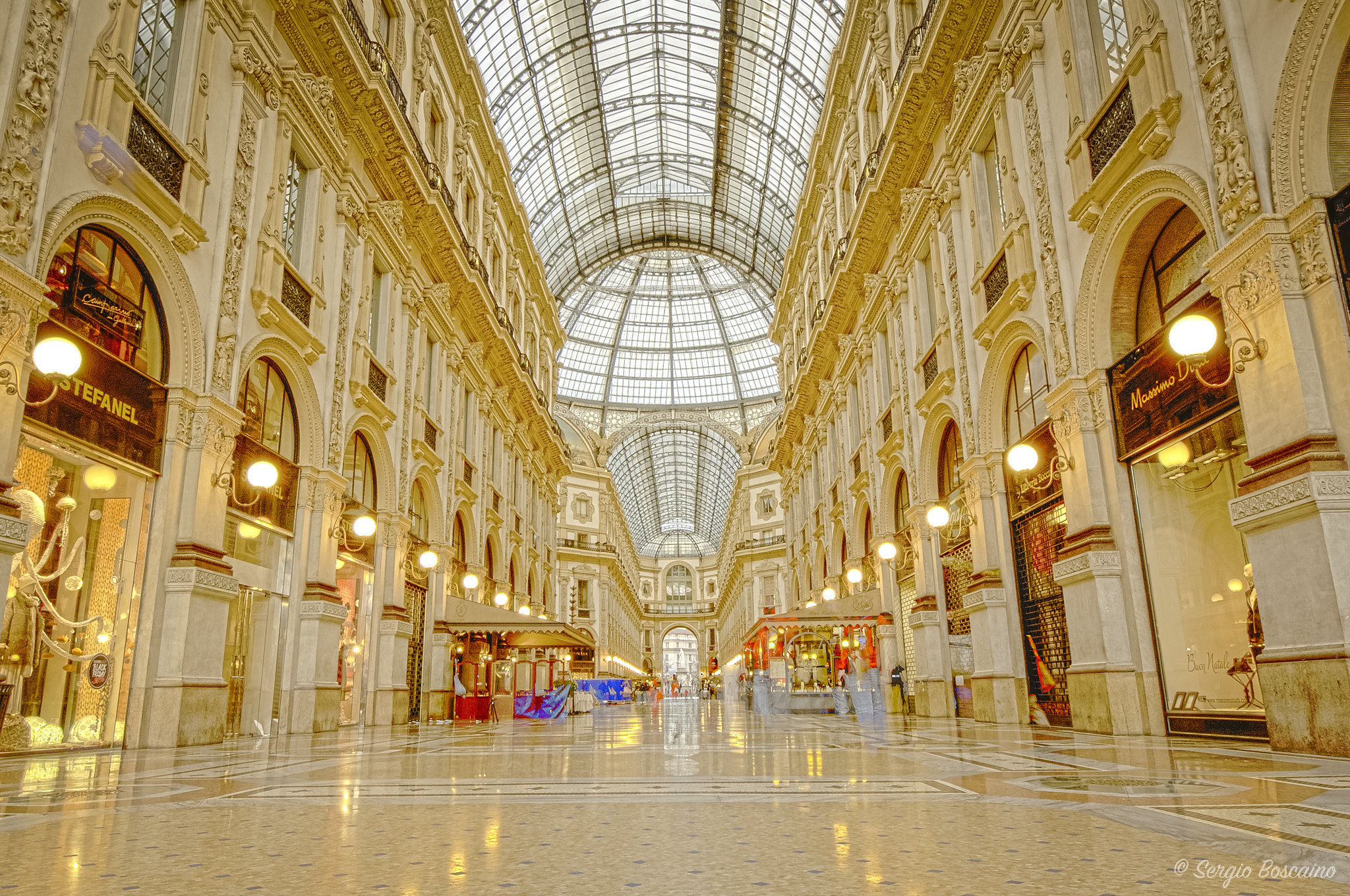
Leave A Comment